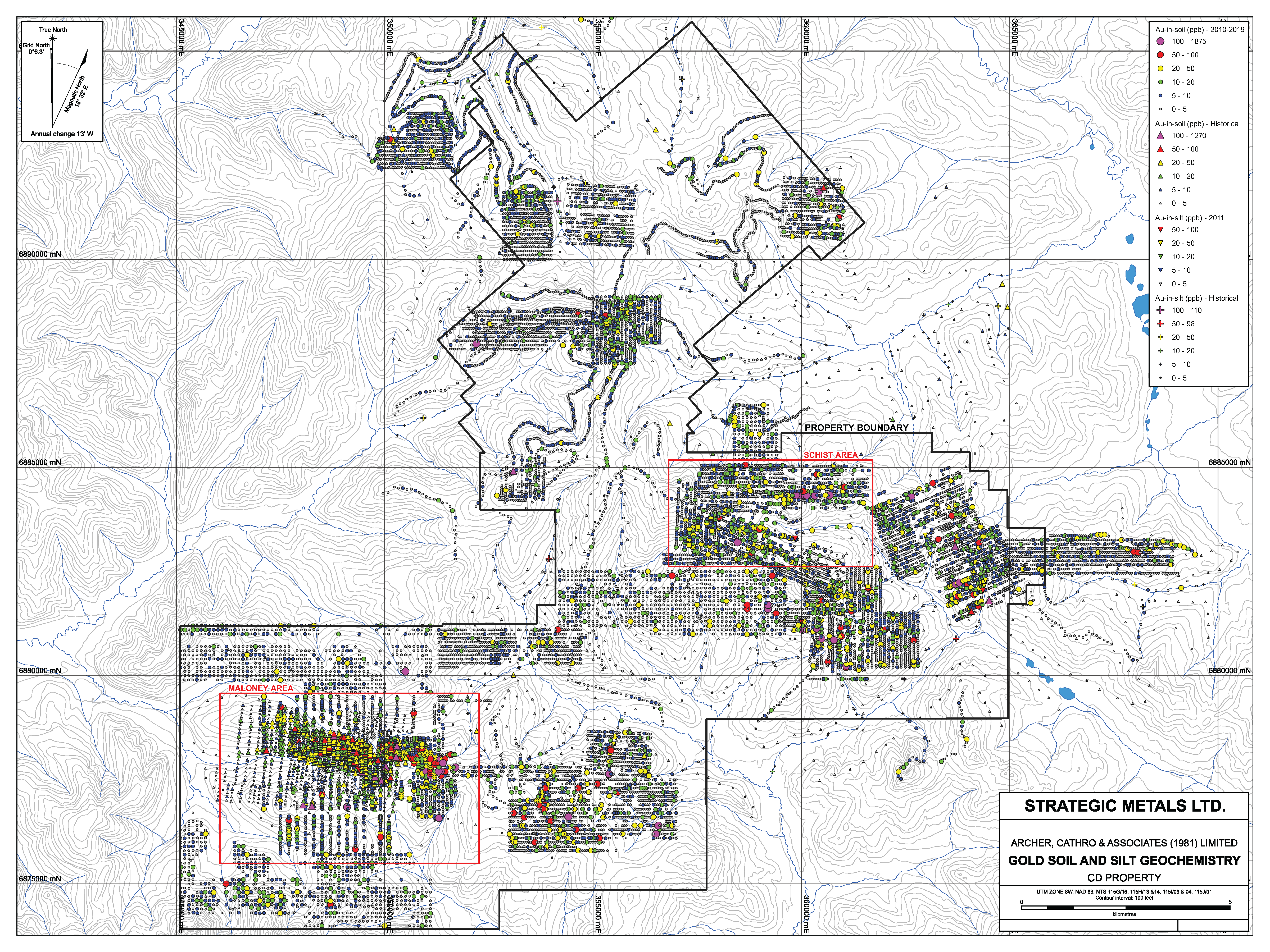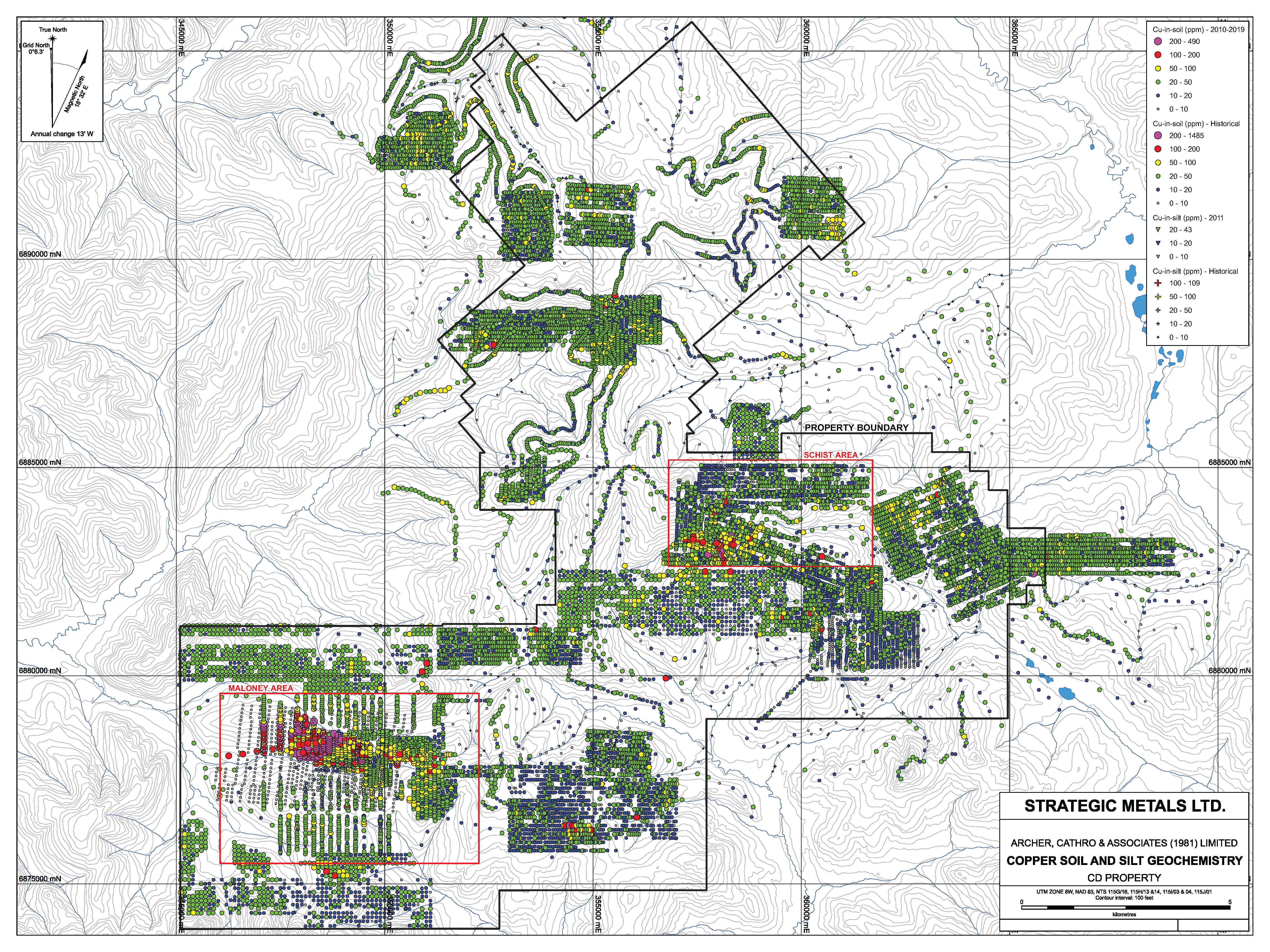CD
- Copper-gold porphyry target located 85 km southwest of Casino deposit
- 1,200 m by 400 m area of anomalous copper- (up to 1,485 ppm) and gold-in-soil (up to 1,270 ppb) geochemistry
- Magnetic high flanked by chargeability highs defines compelling drill targets
- Permitted for drilling.
The CD project area covers moderate rolling hills and lies within a variably glaciated area of the Yukon, at the margin of the unglaciated Yukon Plateau. The porphyry occurrence at CD, referred to as the Maloney Zone, was identified soon after the Casino deposit was discovered in the late 1960s. Early exploration efforts focussed on an area of strong copper-in-soil geochemistry in the lower part of a west-facing valley. In 1976, six shallow diamond drill holes circumscribed the peak copper soil geochemistry but failed to test the area of highest gold geochemistry or the core of the geophysical target. The Company believes that when the sulphide minerals were weathered, copper was leached and transported by groundwater flux and then reprecipitated to the present location of the copper-in-soil anomaly, leaving behind a residual, in-situ gold-in-soil anomaly. This scenario has been observed at the Casino deposit, where there is a well-developed, gold-enriched leached cap and an underlying copper-enriched supergene zone that includes an area downstream of the deposit where copper-bearing springs come to surface. Significantly, at CD, the area of peak gold-in-soil response is cored by the conspicuous magnetic high, coincident resistivity low and flanking chargeability highs characteristic of sulphide minerals around a porphyry core.
The Schist showing on the CD Project covers gold, silver and arsenic bearing veins, breccias and hydrothermally altered metamorphic rocks proximal to a swarm of early Late Cretaceous porphyry dykes within an easterly trending 1 km by 200m wide gold arsenic-antimony soil anomaly. Mineralization consists of 1 to 2% fine grained disseminated pyrite and arsenopyrite with manganese oxide, limonite and sericite alteration. Two epithermal vein and breccia zones were exposed by trenching, with the main vein exposed for 620 m along strike. Chip samples from the trenches assayed 1.67 g/t Au over 6.5m, including 2.82 g/t Au over 3.0m. For comparison, initial trench results in 2009 on the Kona zone (now planned to be mined as a separate open pit) at Newmont’s Coffee deposit returned values of 0.467 g/t Au over 15m, including 0.76 g/t Au over 5m. Peak values of 6.29 g/t Au, 25.7 g/t Ag, 3110 ppm As and 53 ppm Sb were obtained from grab samples in the Schist area.





